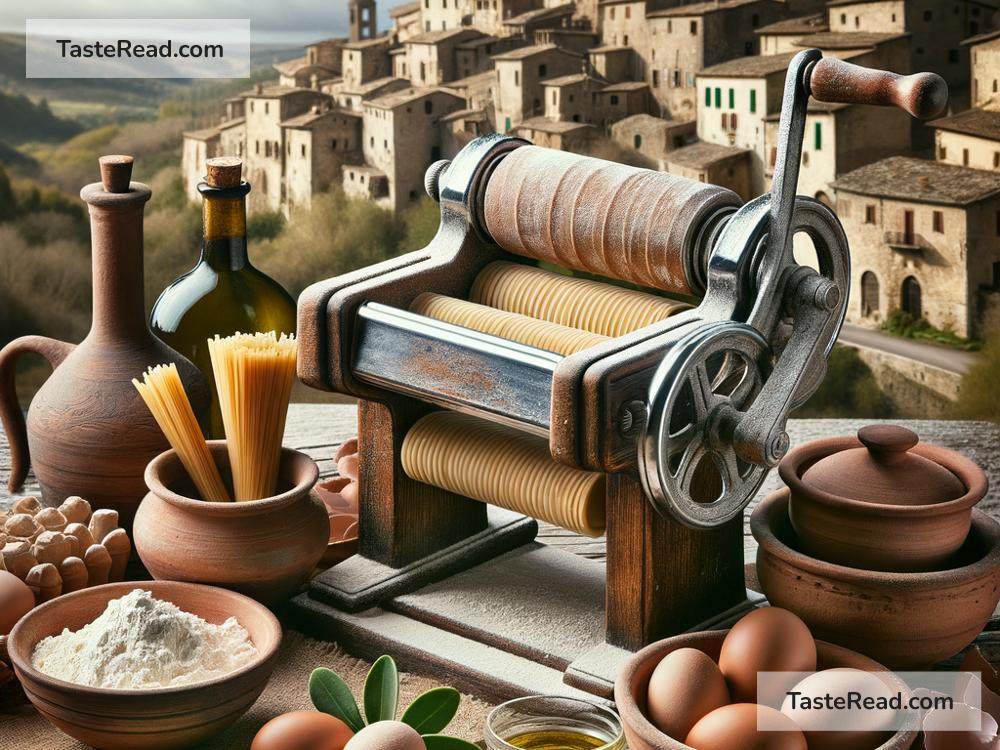How Pasta Was First Created in Ancient Italy
Pasta is one of the most famous and beloved foods in the world. Whether it’s spaghetti, lasagna, ravioli, or penne, pasta plays a central role in Italian cuisine and has fans everywhere. But have you ever wondered how pasta was created? The story of pasta is fascinating and begins hundreds of years ago in ancient Italy.
What Is Pasta?
Before we dive into its origins, let’s talk about what pasta is. Pasta is typically made from flour and water, sometimes with eggs added for extra richness. The dough is shaped into different forms, like long strands, flat sheets, or tubes, and then cooked by boiling. Though pasta might seem simple, it’s incredibly versatile and goes well with all kinds of sauces, meats, and vegetables.
A Common Myth: Was Pasta Invented in China?
You may have heard a popular myth suggesting that pasta was brought to Italy from China by Marco Polo in the 13th century. While Marco Polo did travel to China and may have tasted similar dishes like noodles there, pasta already existed in Italy long before his time! In fact, there’s evidence that ancient Italians enjoyed an early form of pasta as far back as thousands of years ago. So, while noodles from Asia may have influenced Italian pasta styles, the heart of pasta’s creation lies squarely in Italy itself.
Ancient Origins of Pasta in Italy
Historians believe that pasta’s story in Italy began during Roman times, around the 4th century BCE. During that period, Romans ate a dish called “lagana.” Lagana was made from thin sheets of dough that were baked or fried, not boiled like modern pasta. It wasn’t exactly the same as the pasta we know today, but it may have been the earliest ancestor of lasagna.
The key ingredient in ancient pasta-like dishes was durum wheat, a grain that thrives in Italy’s warm climate. The Romans cultivated durum wheat and used it to make bread, flatbreads, and other basic foods. Mixing ground durum wheat with water to make a dough paved the way for pasta-making, although the process developed slowly over time.
Pasta Evolves in Medieval Italy
After the fall of the Roman Empire, pasta-making evolved during the medieval period. By the 9th century, Arab traders brought key innovations to Sicily, an island in southern Italy. The Arabs introduced dried pasta to the region. Unlike fresh pasta made with eggs and water, dried pasta was made from semolina flour and could last much longer without spoiling. This was perfect for sailors and travelers who needed food that could stay fresh during long journeys.
The Arabs also taught Sicilians how to roll pasta dough thin and cut it into strands, which resembled early versions of spaghetti. This innovation helped spread pasta across Italy over time. Because dried pasta was easier to store and transport, it became a staple food for Italian families, especially in southern regions.
Renaissance Brings More Pasta Varieties
During the Italian Renaissance (14th to 17th centuries), pasta continued to grow as a beloved food. Advancements in culinary skills and technology played a big role in this evolution. People began to invent new pasta shapes like ravioli (stuffed pasta), tortellini (round, filled pasta), and macaroni (short, curved tubes). By the Renaissance, pasta was no longer just for the lower class—it was enjoyed by everyone, from peasants to nobles.
The arrival of tomatoes from the Americas in the 16th century also changed how Italians ate pasta. At first, tomatoes were thought to be poisonous, but as people realized they were safe and delicious, they became a common ingredient in Italian cooking. Combining pasta with tomato sauce became a huge culinary innovation that forever changed Italian cuisine.
Pasta’s Journey to Global Fame
By the 18th and 19th centuries, pasta-making machines were developed to mass-produce spaghetti and other shapes, making pasta more accessible than ever. Italians who emigrated to other countries, including the United States, brought their love for pasta with them. Over time, Italian immigrants introduced dishes like spaghetti with meatballs, spreading their culinary traditions far and wide.
Today, pasta is made not just in Italy but all over the world. Countries have adapted pasta to fit their unique tastes, adding local ingredients and flavors. However, Italy remains the true home of pasta, and Italian chefs continue to innovate with new recipes and techniques.
Why Is Pasta So Special?
Pasta’s story is more than just the tale of a food—it’s a reflection of history, culture, and human creativity. From ancient Roman lagana to a global sensation, pasta has evolved over centuries to become the delicious dish we know and love. What makes pasta so special is how versatile it is. You can prepare it in countless ways, mix it with many ingredients, and turn it into comfort food or gourmet cuisine.
So, the next time you sit down to enjoy a bowl of pasta, think about its journey. From ancient Italy to your plate, pasta carries a rich history full of innovation, tradition, and love for good food. Buon appetito!


